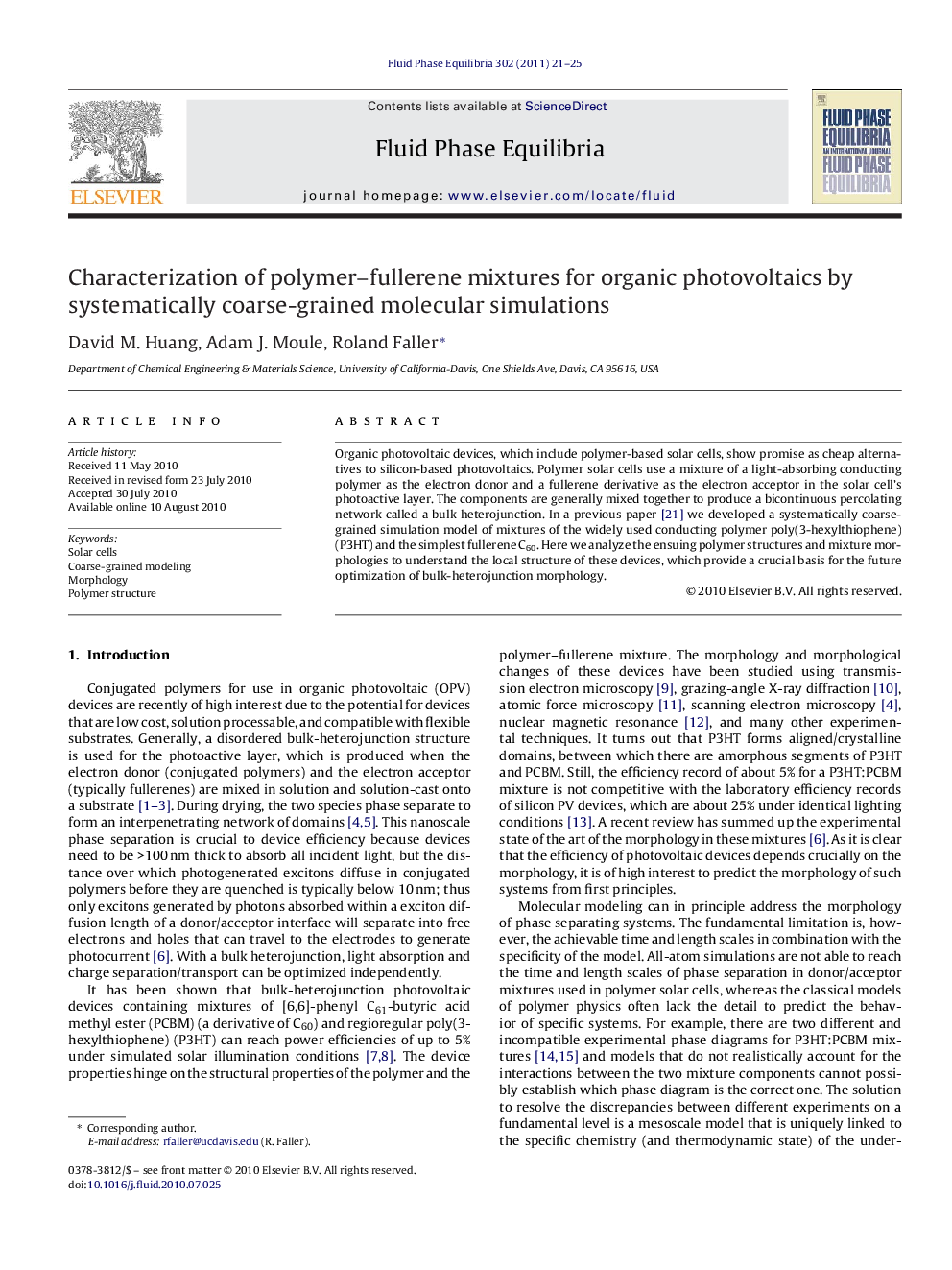| Article ID | Journal | Published Year | Pages | File Type |
|---|---|---|---|---|
| 202286 | Fluid Phase Equilibria | 2011 | 5 Pages |
Organic photovoltaic devices, which include polymer-based solar cells, show promise as cheap alternatives to silicon-based photovoltaics. Polymer solar cells use a mixture of a light-absorbing conducting polymer as the electron donor and a fullerene derivative as the electron acceptor in the solar cell's photoactive layer. The components are generally mixed together to produce a bicontinuous percolating network called a bulk heterojunction. In a previous paper [21] we developed a systematically coarse-grained simulation model of mixtures of the widely used conducting polymer poly(3-hexylthiophene) (P3HT) and the simplest fullerene C60. Here we analyze the ensuing polymer structures and mixture morphologies to understand the local structure of these devices, which provide a crucial basis for the future optimization of bulk-heterojunction morphology.
